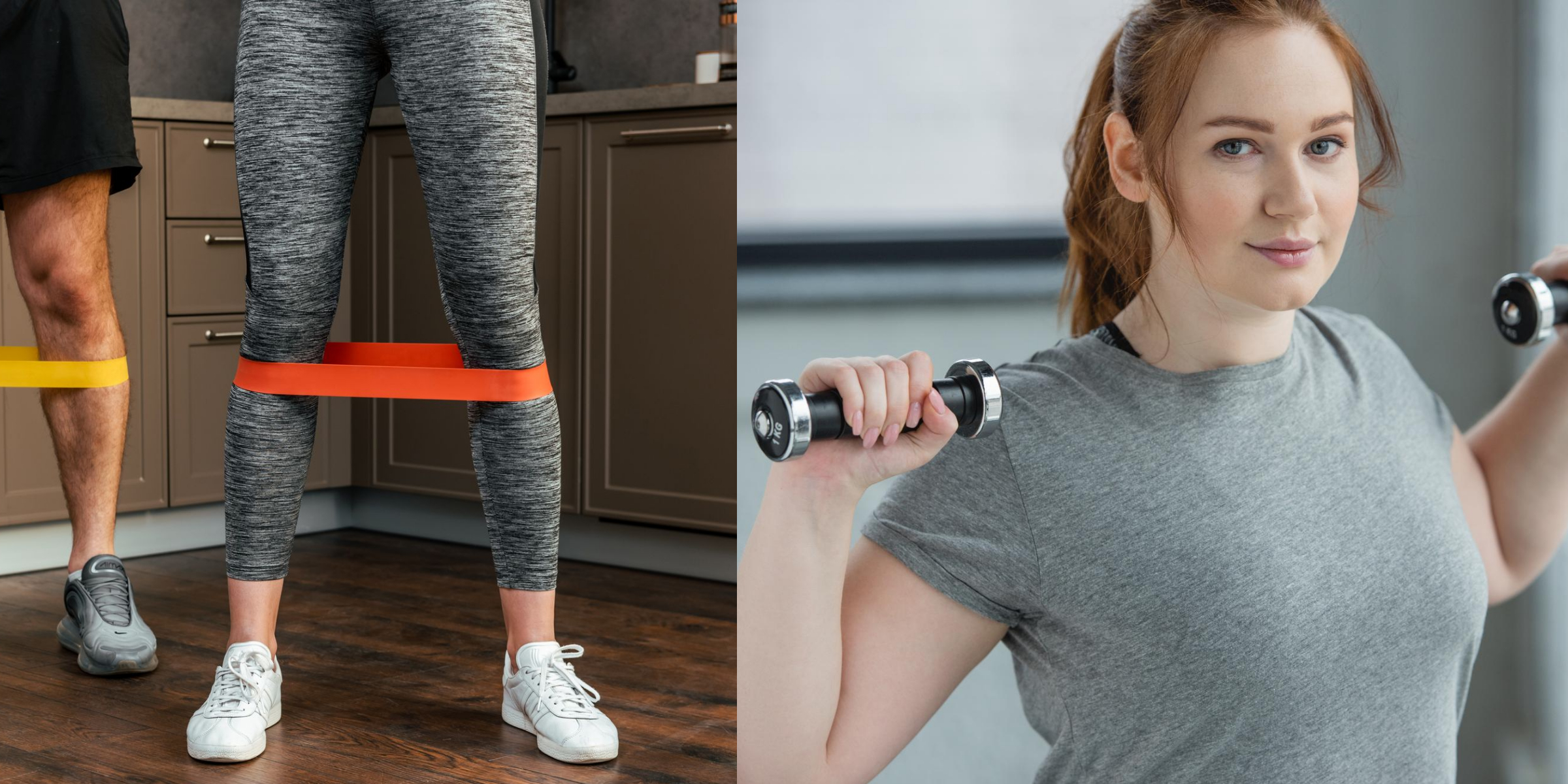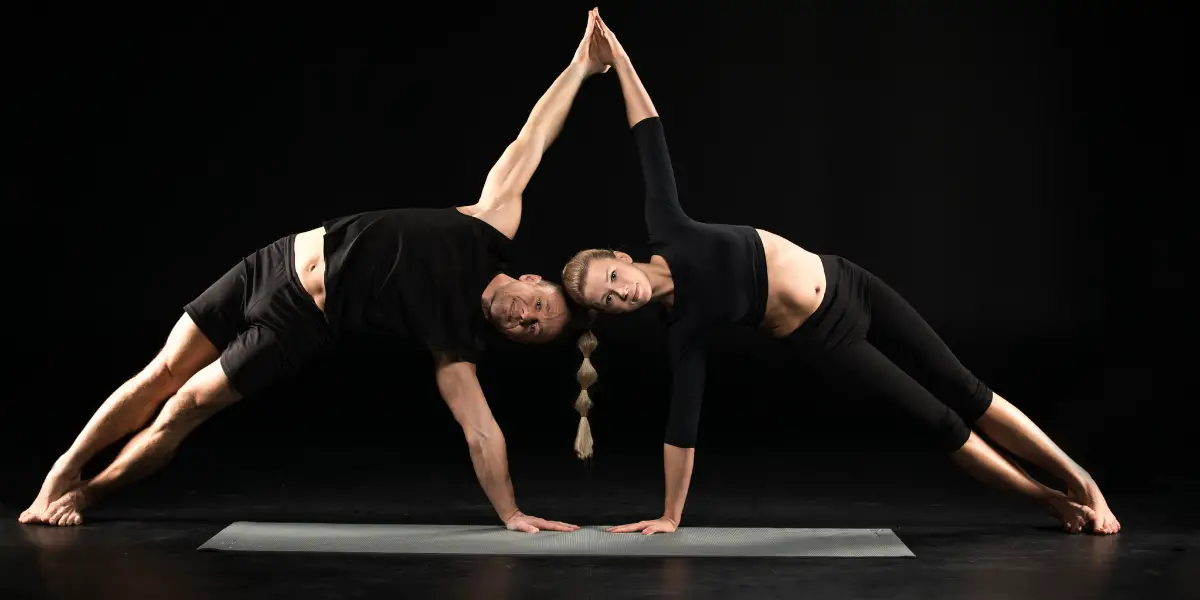Navigating the expansive world of fitness tools can sometimes feel like finding your way through a labyrinth. Two prominent tools stand out in the maze, each with its own set of devotees and distinct benefits.
Pilates resistance bands and weights are effective for workouts, but their suitability depends on your goals. Resistance bands offer versatility and portability and are great for improving flexibility and joint mobility. On the other hand, weights are superior for building raw strength and muscle mass. Choose based on your specific objectives.
As we journey into this exploration, you might discover some unexpected insights into your fitness preferences and needs. Dive in, and let’s embark on this comparative adventure together.
Understanding the Mechanics: How They Work
When delving into the mechanics of Pilates resistance bands and weights, it’s essential to grasp the fundamental differences in how they challenge our muscles.
Pilates Resistance Bands:
Resistance bands operate on the principle of elastic resistance. As the band stretches, the resistance increases, requiring more force to continue the stretch.
This dynamic resistance ensures muscles are engaged throughout the entire contraction and extension. Another unique aspect of resistance bands is their ability to challenge muscles in multiple directions, mimicking real-world movements.
Weights (Dumbbells and Barbells):
Weights, whether dumbbells, barbells, or weight machines, utilize gravitational force to challenge our muscles.
When you lift a weight, you’re working against gravity to move it upwards, and controlling the weight as you lower it ensures muscles are engaged during the eccentric phase.
The resistance provided by weights is constant, meaning it doesn’t change whether the weight is at the lift’s start, middle, or end. This consistency provides a predictable challenge, making measuring progress and increasing load methodically easier.
While both tools aim to provide resistance to muscle movement, how they deliver that resistance and the movement dynamics vary significantly. Understanding these mechanics is crucial when deciding which tool aligns best with one’s fitness objectives.
Benefits Beyond Strength: Flexibility and Mobility
Strength training, while paramount, is just one facet of a comprehensive fitness routine. Flexibility and mobility, often overshadowed, play vital roles in overall well-being and athletic performance. Let’s delve into how Pilates resistance bands and weights contribute to these two crucial aspects of fitness.
- Pilates Resistance Bands:
- Adaptability: Can be used for a range of motions, promoting strength and flexibility simultaneously.
- Elastic Tension: Provides consistent resistance during stretches, aiding in muscle flexibility.
- Dynamic Stretching: Seamlessly integrates into routines to enhance mobility.
- Dual Function: Combines resistance and stretching to boost both strength and flexibility.
- Weights:
- Focus on Strength: Primarily targets muscle strength and hypertrophy.
- Promotes Joint Mobility: This can enhance mobility when used in exercises like deep squats, lunges, and overhead presses.
- Flexibility: Less associated with improving flexibility, often requiring additional stretching routines.
- Intentional Approach: Excel in strength building but necessitates deliberate routines for flexibility and mobility.
While both tools offer benefits beyond sheer muscle building, Pilates resistance bands inherently intertwine strength with flexibility and mobility. On the other hand, weights excel in strength development but require a more intentional approach to positively influence flexibility and mobility.
Practicality and Portability: Fitting into Your Lifestyle
In our ever-evolving, fast-paced world, the tools we choose for our fitness regimen must align seamlessly with our lifestyles. Practicality and portability often stand as deciding factors for many, especially those constantly moving or with space constraints.
Pilates resistance bands emerge as a beacon of convenience in this scenario. Their lightweight and compact nature ensures they can effortlessly fit into a bag or suitcase, making them an ideal companion for those who travel. Moreover, they’re incredibly versatile, catering to various exercises from strength training to stretching. Their space-efficient design makes them a preferred choice for home workouts, especially when space is premium. On the economic front, these bands are more pocket-friendly and often more affordable than a comprehensive set of weights or a gym membership.
On the other hand, weights bring their own set of advantages to the table. Available in various sizes and weights, they allow for a structured progression in workouts, offering a tangible way to measure and track one’s progress. Their stable resistance is often appreciated by those who prioritize tracking their strength gains meticulously.
However, they come with their own set of challenges. Weights typically demand more space, and dedicated storage solutions might be necessary to keep things organized. The initial financial outlay can also be substantial, especially if aiming for diverse, high-quality equipment.
The decision between Pilates resistance bands and weights often pivots on individual lifestyle considerations. Whether it’s the frequency of travel, available storage space, budget constraints, or specific fitness goals, the choice is deeply personal and varies from one individual to another.
Safety and Suitability: Catering to Different Fitness Levels
In fitness, choosing tools that align with one’s abilities and goals is crucial. Pilates resistance bands and weights offer unique benefits but cater differently to various fitness levels and come with distinct safety considerations.
Pilates Resistance Bands:
- Low-Impact: Ideal for beginners, older people, or those in rehabilitation.
- Gradual Tension: Reduces risks of sudden strains or overexertion.
- Adaptable: Allows for exercise modifications to match different strength levels.
Weights:
- Measurable Progress: Suitable for those seeking clear progression and muscle growth.
- Static Resistance: Offers consistent challenge, ideal for intermediate and advanced levels.
- Technique-Critical: Proper form is vital to prevent injuries and overexertion.
While Pilates resistance bands provide flexibility and gentleness, especially beneficial for those starting their fitness journey or recovering, weights cater more to those already acquainted with resistance training and pursuing tangible strength gains. Making an informed choice depends on understanding one’s fitness goals and prioritizing safety.
Integration into Routine: Crafting a Balanced Workout
The tools we incorporate into our fitness regimens should seamlessly blend with our routines, offering a holistic approach to achieving our goals. Pilates resistance bands and weights can be integrated into workouts, but how they complement or diversify a routine varies.
Due to their inherent versatility, Pilates resistance bands can be woven into many exercises, from warm-ups to cool-down stretches. Their elastic nature can enhance both strength training sessions and flexibility routines. Whether you’re looking to add some resistance to your morning stretches or intensify Pilates sequences, these bands provide a fluid integration without disrupting the flow of a workout.
Weights, in contrast, are primarily centered around strength training. They’re instrumental in muscle building, endurance enhancement, and boosting metabolic rates. Integrating weights into a routine often involves structured sets and repetitions, focusing on targeted muscle groups. While they might not be as versatile as resistance bands in exercise variety, they introduce discipline and specificity to a routine that can benefit goal-oriented workouts.
Crafting a balanced workout is only sometimes about choosing one over the other. Many fitness enthusiasts find value in combining the two, leveraging the adaptability of resistance bands with the structure and intensity of weights. This hybrid approach ensures a comprehensive workout that addresses strength, flexibility, endurance, and overall functional fitness.
Sources:
https://www.litmethod.com/blogs/boltcut-blog/resistance-bands-vs-free-weights
https://www.themanual.com/fitness/resistance-bands-vs-dumbbells/




